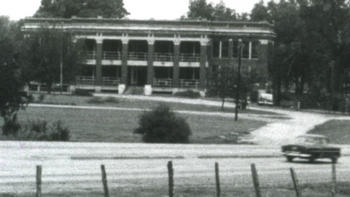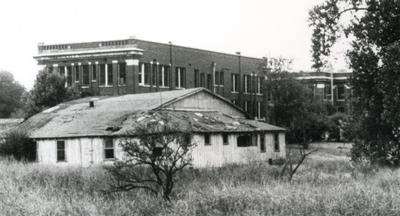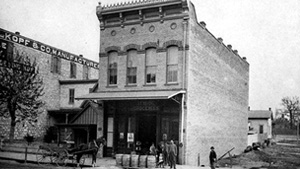
by Frances James

This information is taken in part from DCPA member Frances James’ brief summary to the Texas Historical Commission sometime back in the 1980’s.

“By 1876 the Dallas County Commissioners decided our county needed a poor farm. The site that was selected was 339 acres owned by W. J. Keller south of the Dallas City limits, near the town of Hutchins. These acres were from the U. Wuthrick survey, abstract number 1518. The need for some facility to care for the destitute members of the county was recognized for many years.
The presiding judge in Sept. 1876 was Nat M. Burford (county). In January 1877 the arrangement was made to purchase the land for the poor farm. By December 1877 a financial report was furnished by N. O. McAdams, who had been the Sheriff of Dallas County from 1862 to 1866 and was now one of the County Commissioners (1875-1894).
The farm was designed to provide for the paupers in the county by furnishing some sort of housing, and those that were able worked in the fields raising crops. The vegetable were used on the farm and also sold for cash. Supplies were bought from local merchants such as Sanger Brothers, and a barrel of navy beans from the firm of Wallace and Waggener. B. D. Atwell had a store in Hutchins and sold a bill of goods for $7.96. The court (commissioners) authorized payment in that amount. Some of the indigent were also law breakers and a jail was built on the property in 1883. The contract was awarded to A. Browlee on March 28.
J. A. Kinnon was the superintendent in 1883 and had to hire laborers to pick the cotton. In 1884 the crop was sold for $1,868.45. The convicts were paid $1 per day and discharged after working their sentence out.
Although it was presumed the poor farm was only available to old people, in 1900 children were removed from the premises and sent to St. Matthews home for children in south Dallas on Gould Street. Many paupers died there and were buried at nearby Hutchens.
From the very first, the records refer to the doctors who were associated with the farm. In 1879 Dr. George S. Coleman was hired and instructed to visit as early as possible each day. Another early doctor was Wayne Sims in 1880. Dr. A. W. Carnes was hired at a salary of $20 per month.

In the late 1940’s the poor farm was changed to the Dallas City-County Convalescent Center. The sturdy red brick buildings were demolished when the Loop 635 (LBJ Freeway) was built. The property that remains is now used for Road and Bridge District 3 shops. The Dallas County Juvenile Center is on part of the land. There is no longer a farm or garden.


